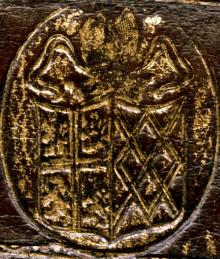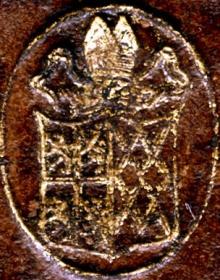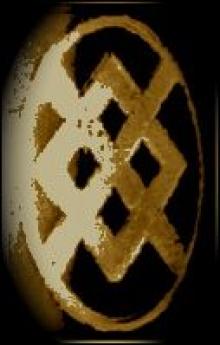Cosin, John, Bishop of Durham (1595 -1672)
John Cosin was the son of Giles Cosin, a wealthy citizen of Norwich, and Elizabeth Remington. Educated at Norwich Free School and Caius College, Cambridge, he was an opponent of the puritans and a friend of Laud and Montague. His publication of A collection of private devotions in 1627 confirmed his unpopularity with the puritans, and in the following year he was further embroiled over the :Babylonish ornaments” which he was instrumental in introducing to Durham Cathedral where he was a prebend. In 1635 he was elected Master of Peterhouse, Cambridge, where he introduced the Laudian ritual. “A glorious new altar was set up, and mounted on steps, to which the master, fellowes, schollars bowed, and were enjoyned to bow by Doctor Cosins, the master who set it up. There were basons, candlestickes, tapers standing on it, and a great crucifix hanging over it'”, according to Prynne. In 1639 Cosin was Vice Chancellor, and in 1640 was appointed Dean of Peterborough, but was sequestrated by the House of Commons on the complaint of Peter Smart, an old enemy from his Durham days. In 1644 he was ejected from his Mastership for sending the college plate to the royal mint at York. He retired to Paris where he officiated as chaplain for the exiled King, and there suffered great poverty, and was even on the point of selling his precious books. He was a great bibliophile and collected a library that was described by John Evelyn as one of the choicest collections of any private person in EnglandAt the beginning of the Restoration. Cosin immediately returned to England, and resumed his place as Dean of Peterborough. On the 2 December 1660 he was consecrated Bishop of Durham. He founded Bishop Cosin's Library for the use of the Dean and Chapter in 1669, and ordered the books to be marked on the backs in gold with the first two stamps by a Durham bookbinder, Hugh Hutchinson. This was only partially done before his death. Stamps 3 and 4 were placed on the books rebound with the help of the Pilgrim Trust after the Second World War.




